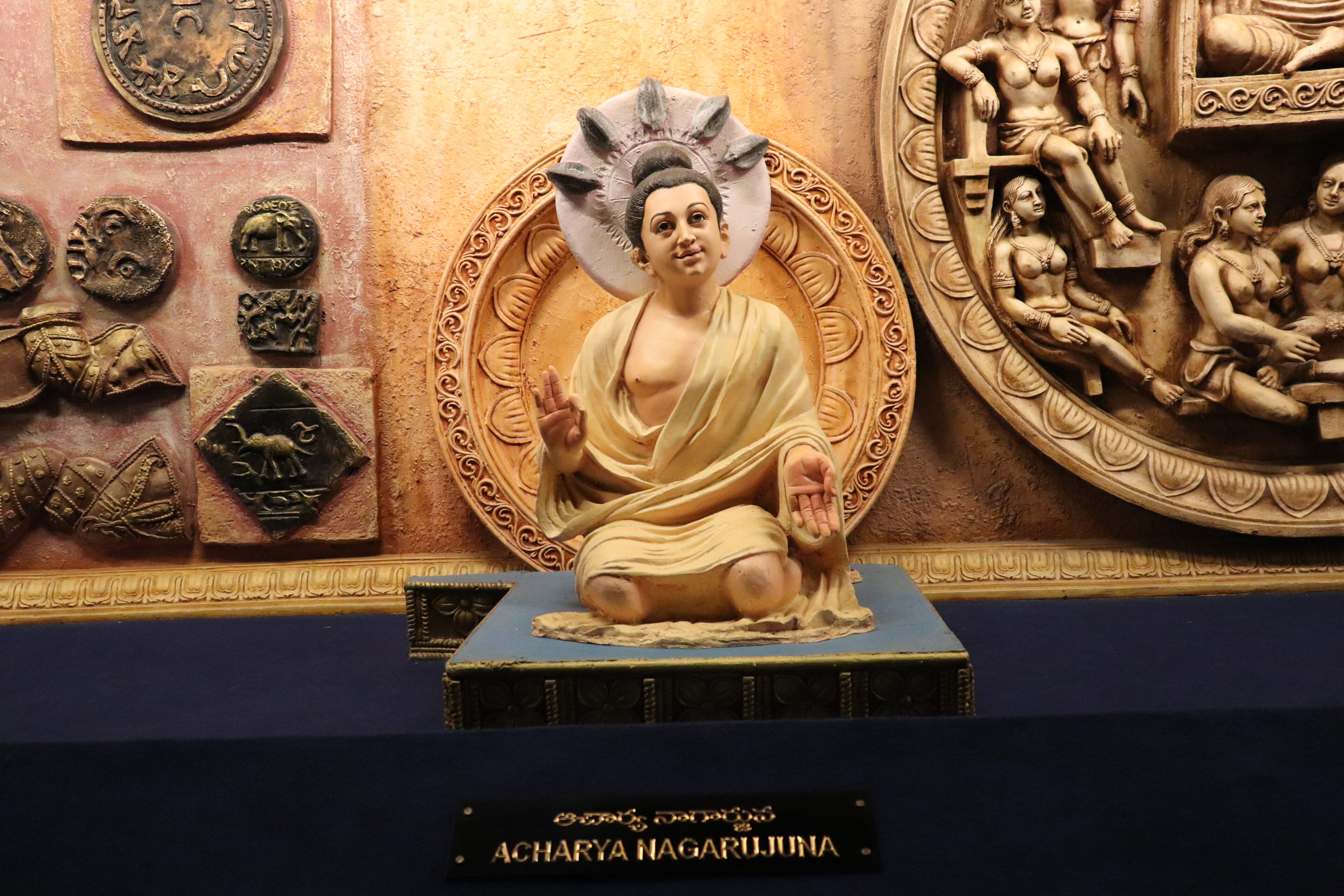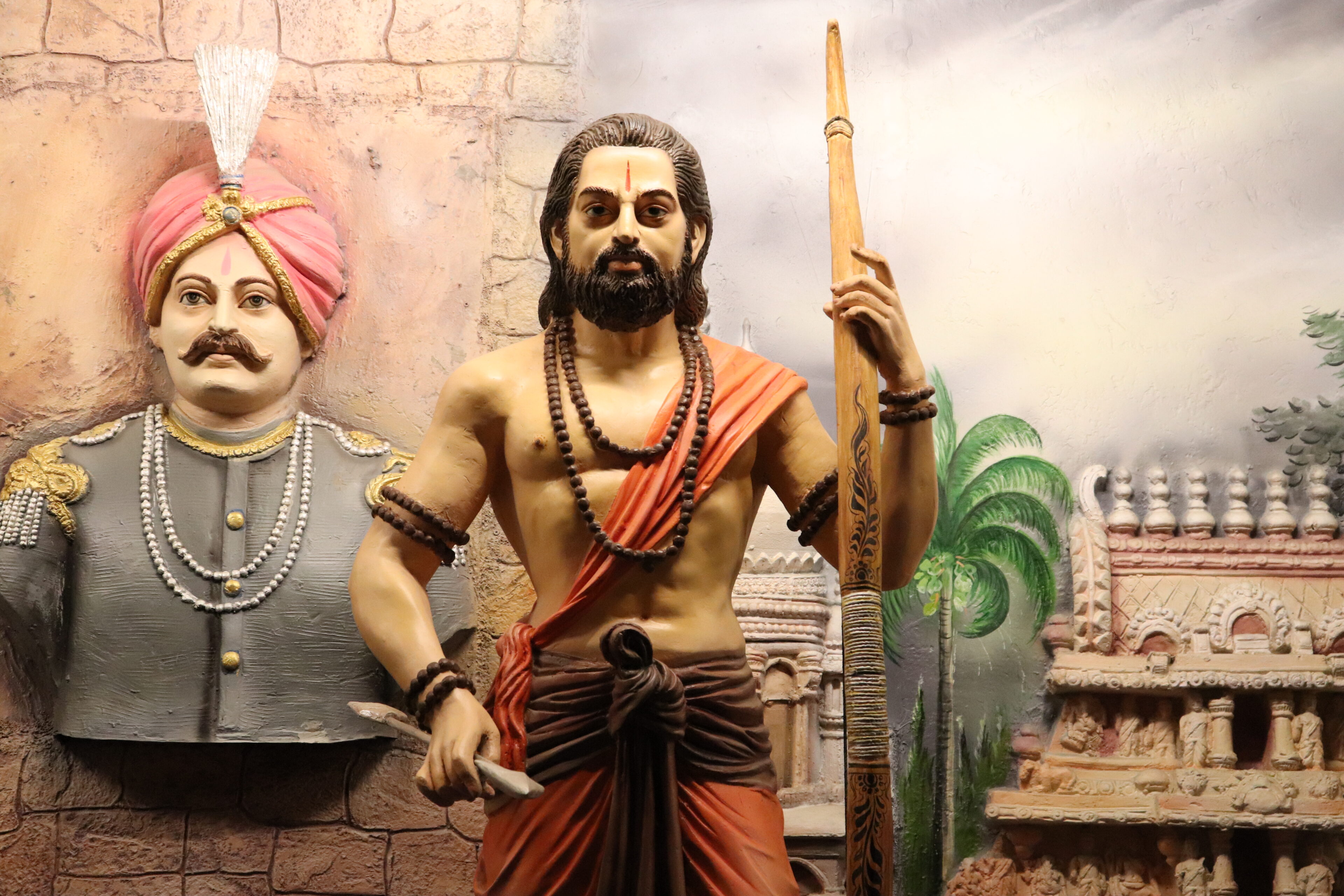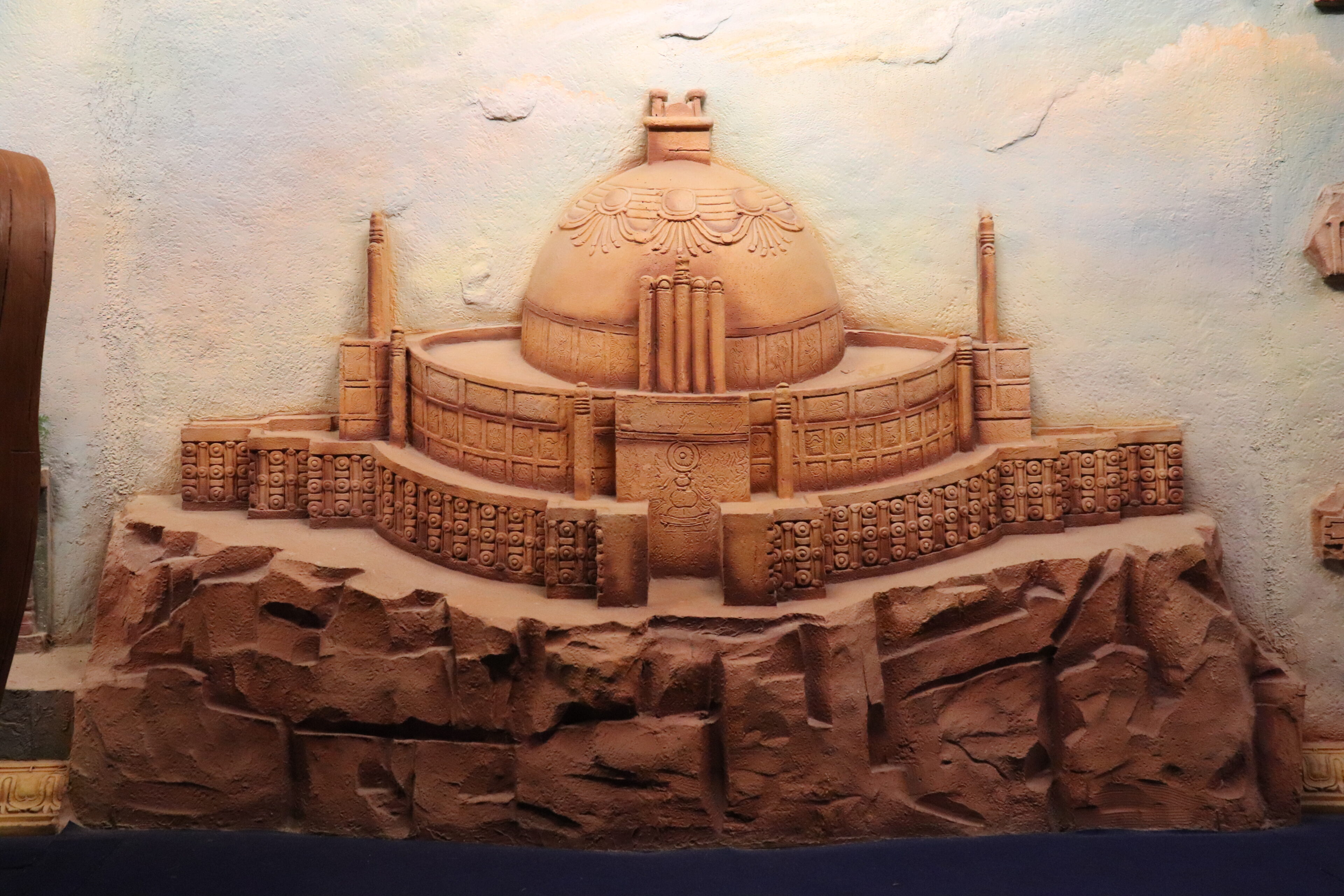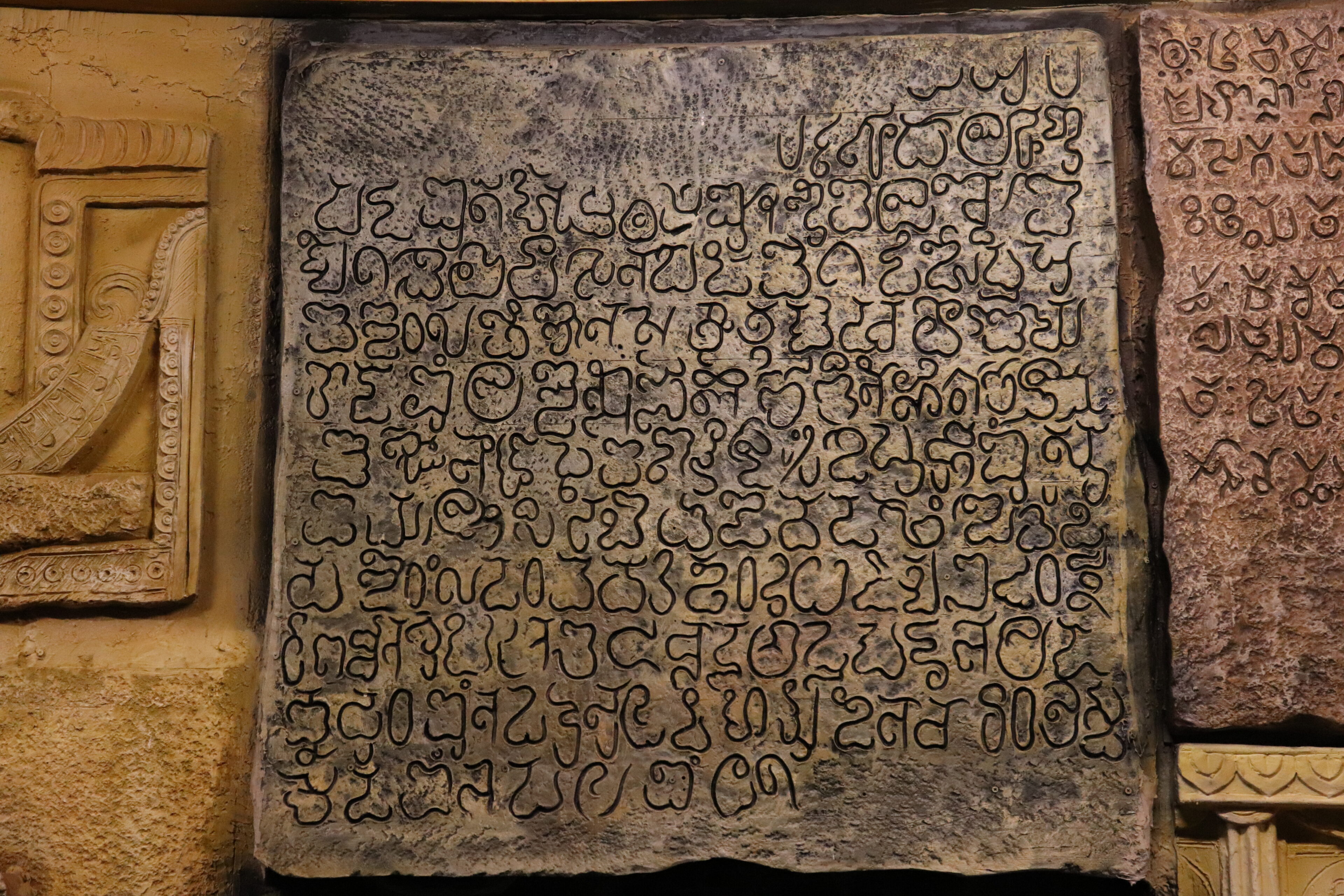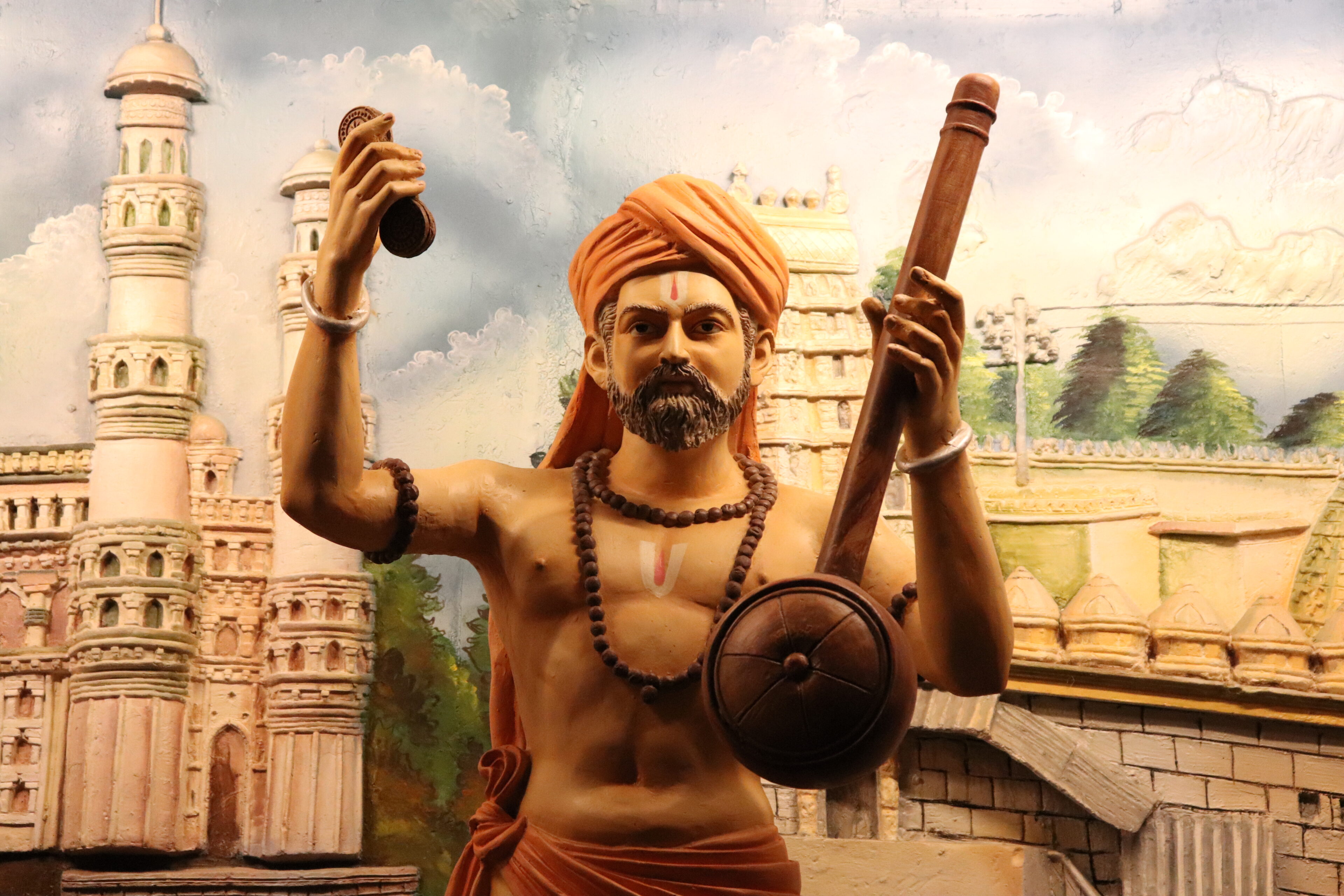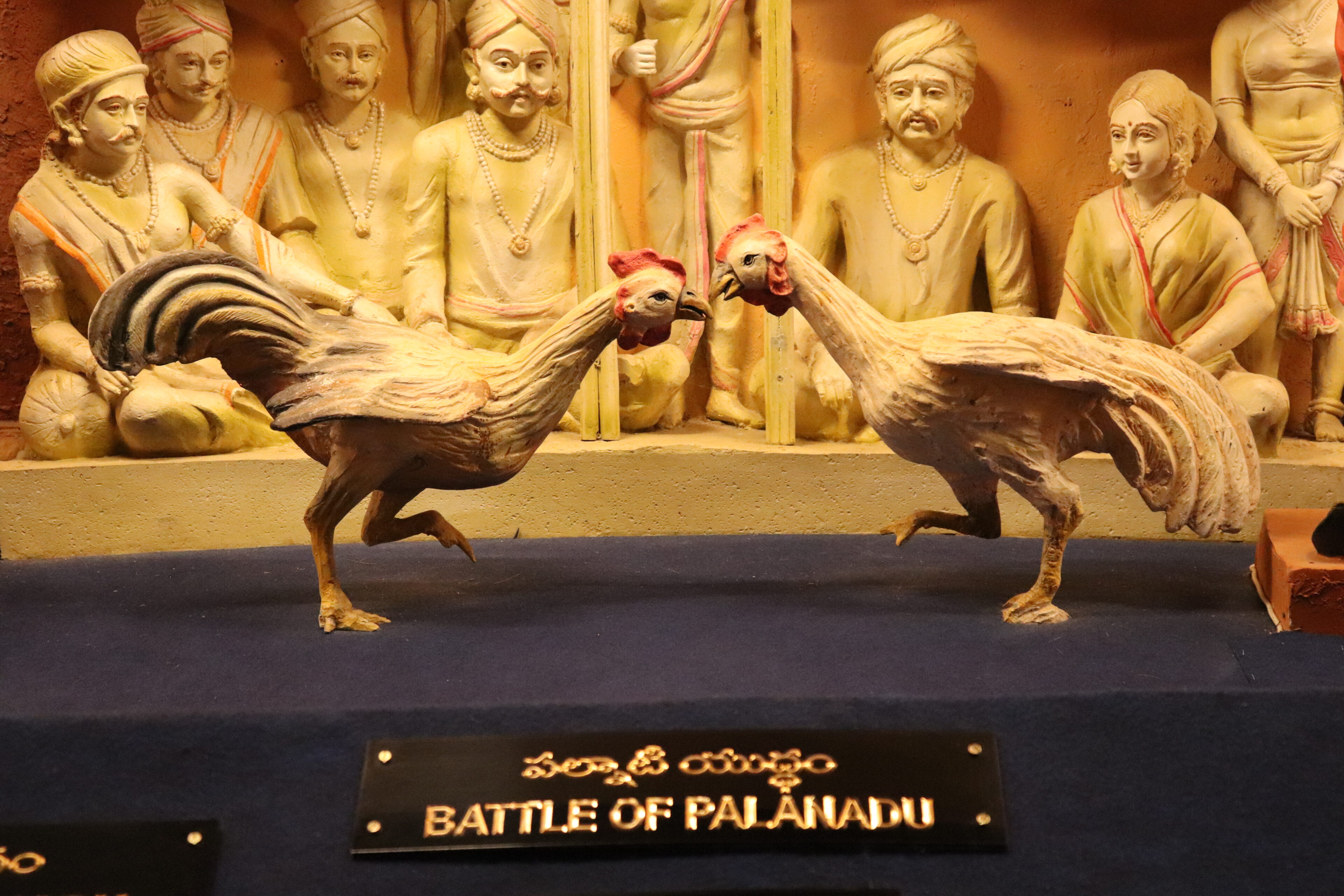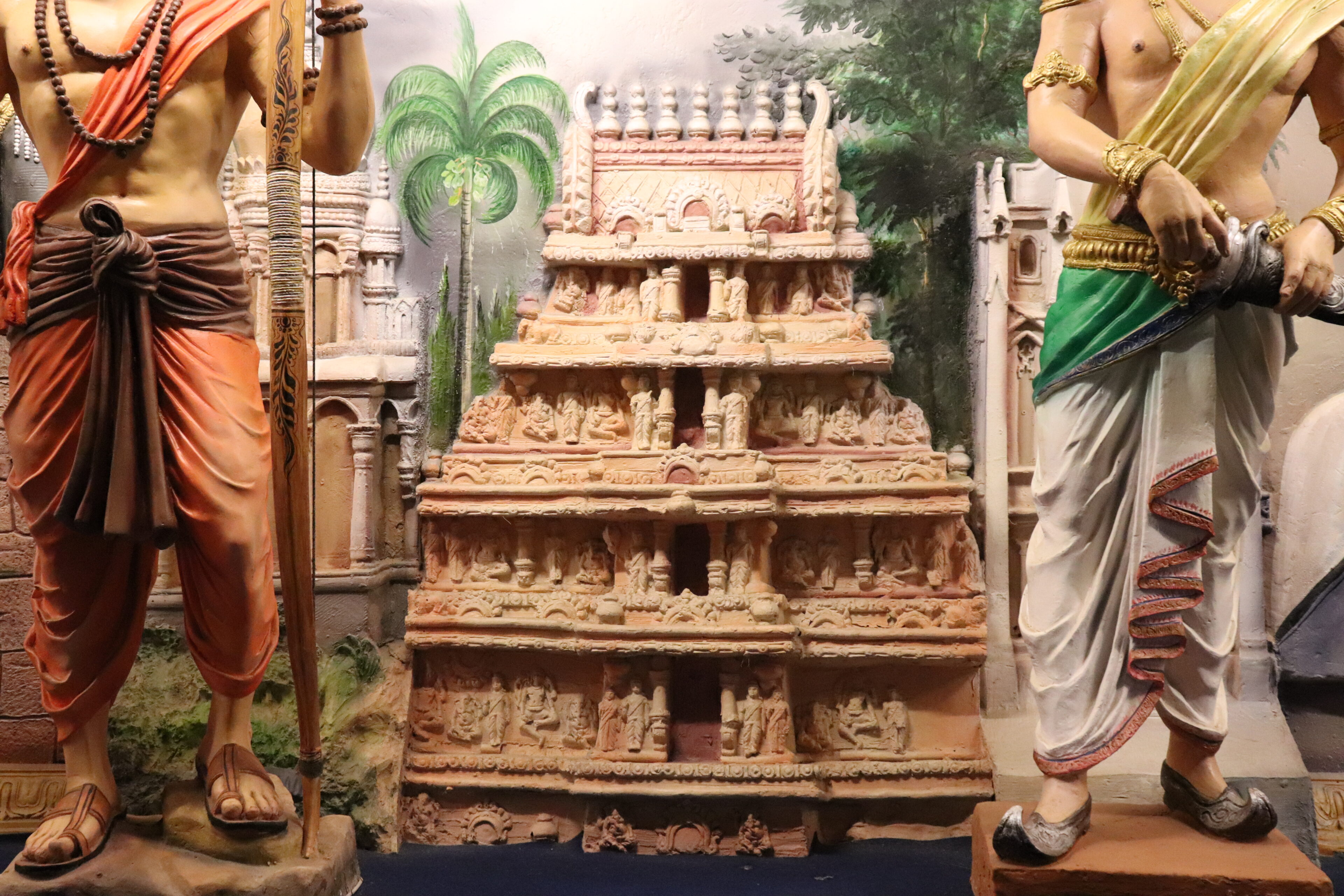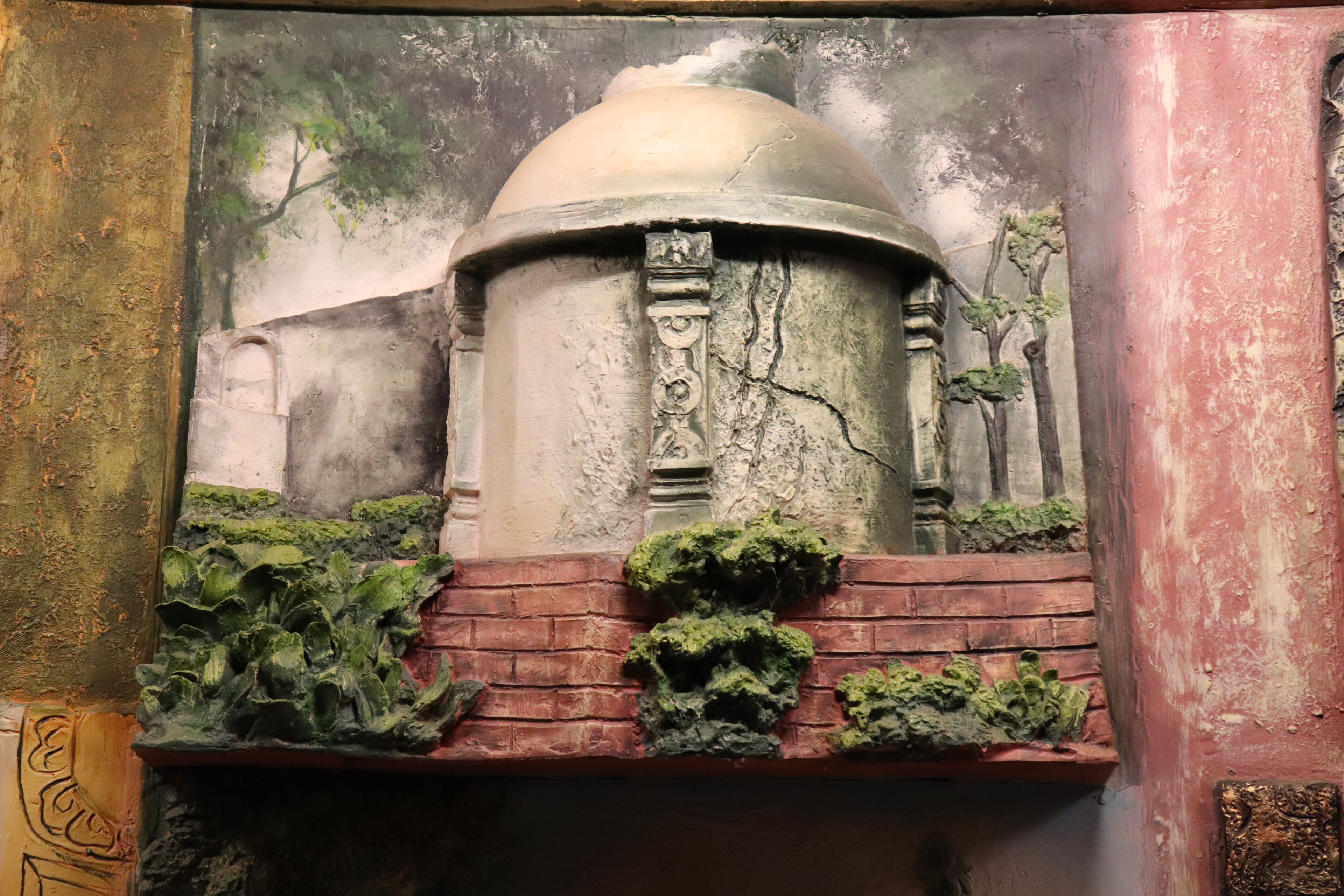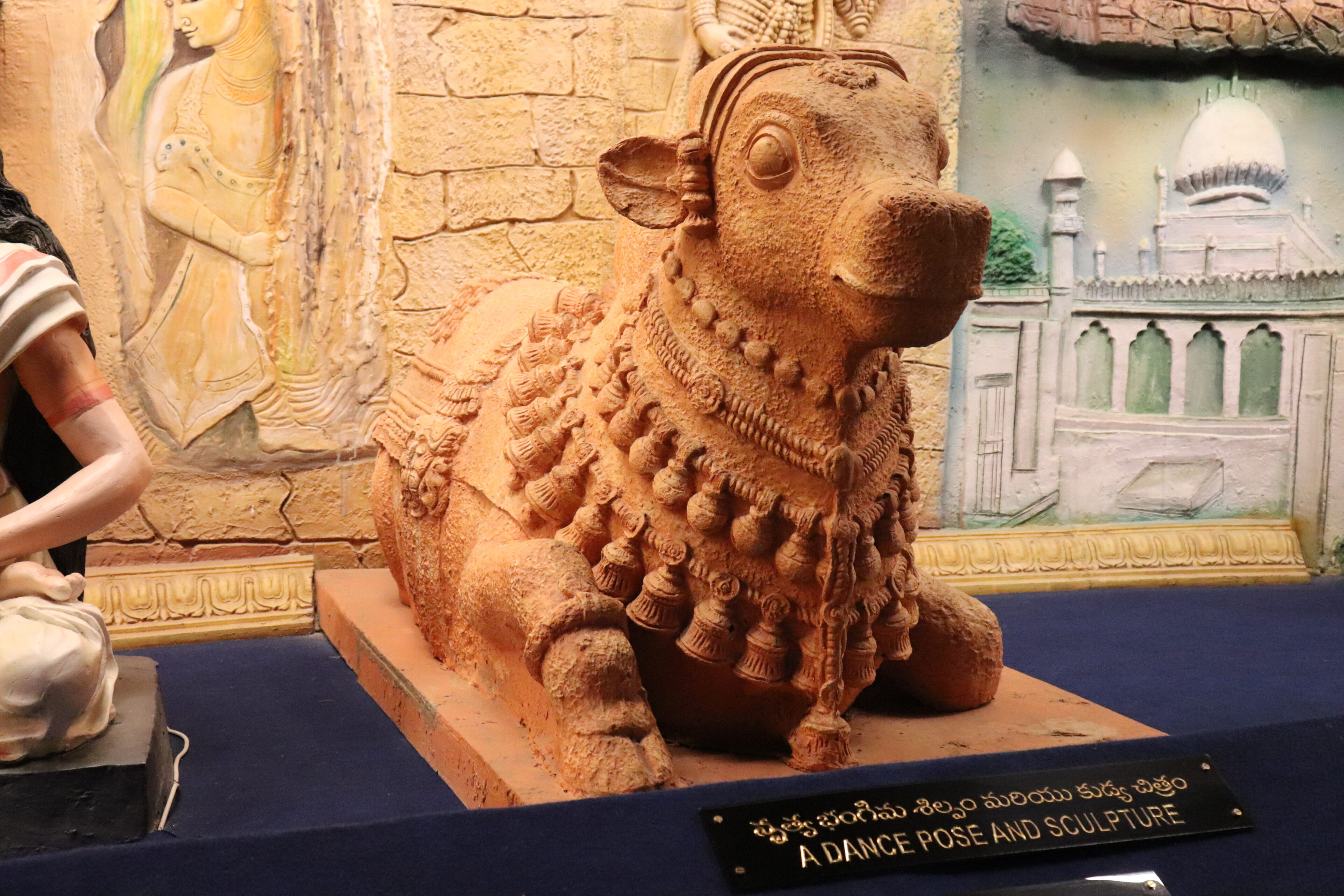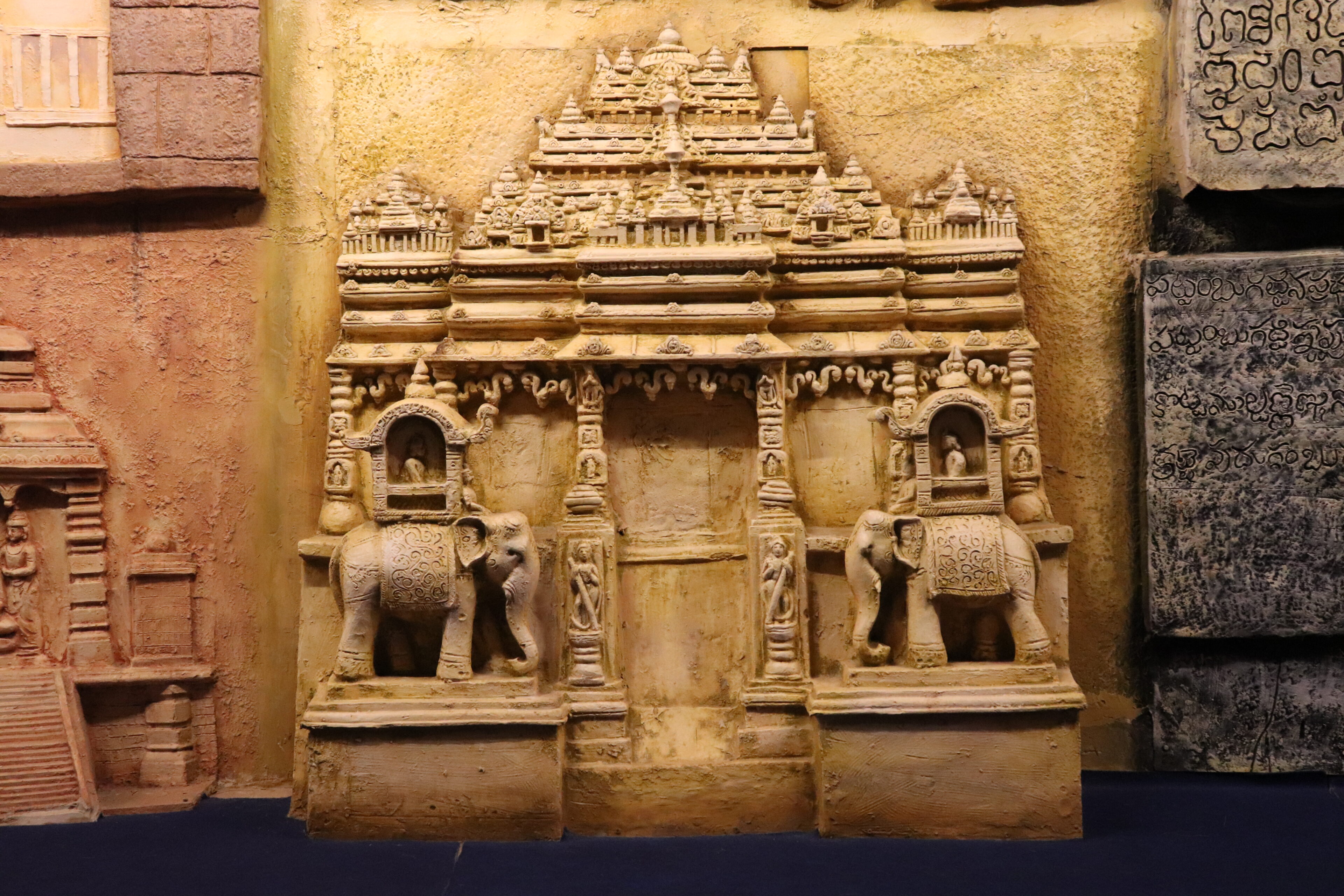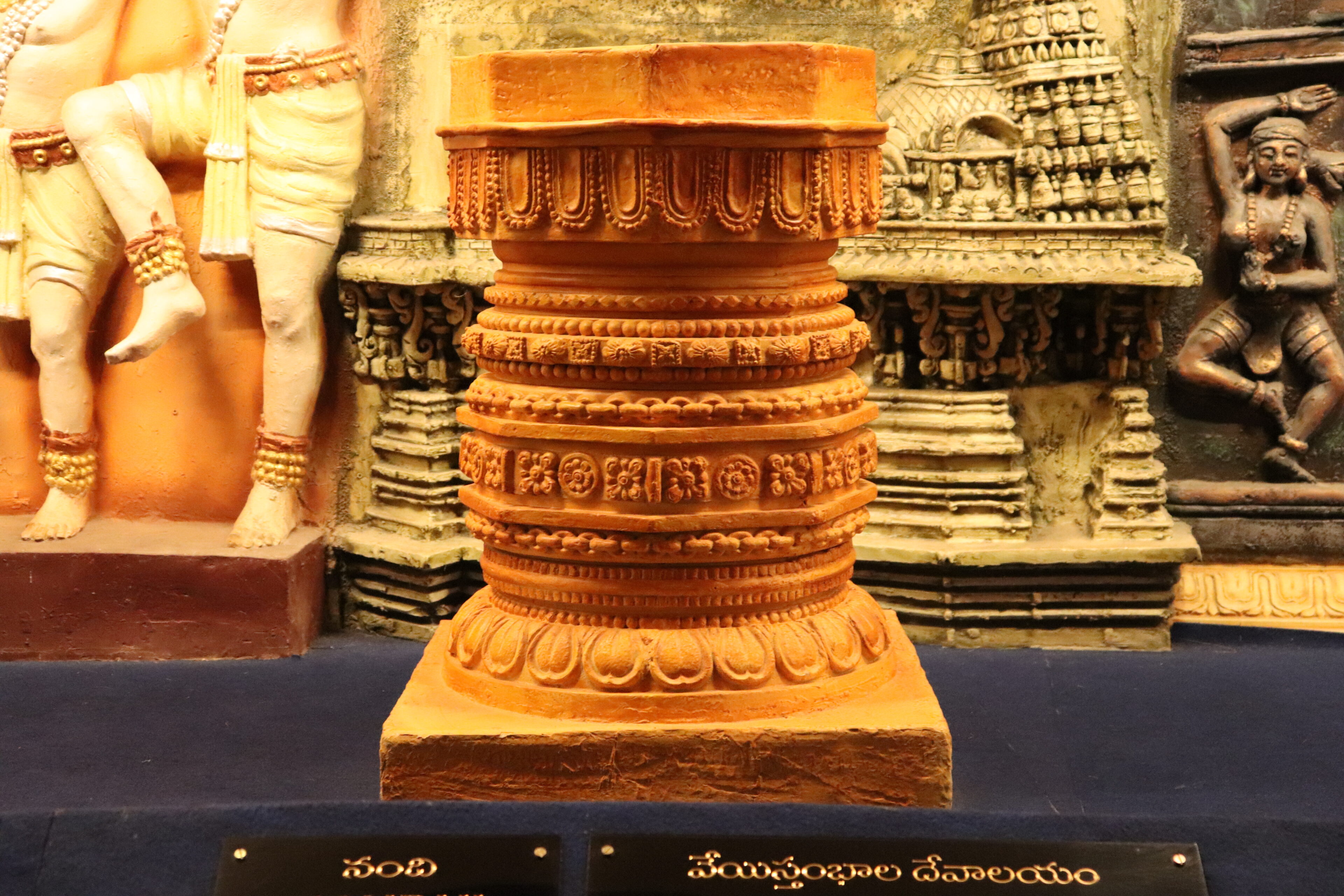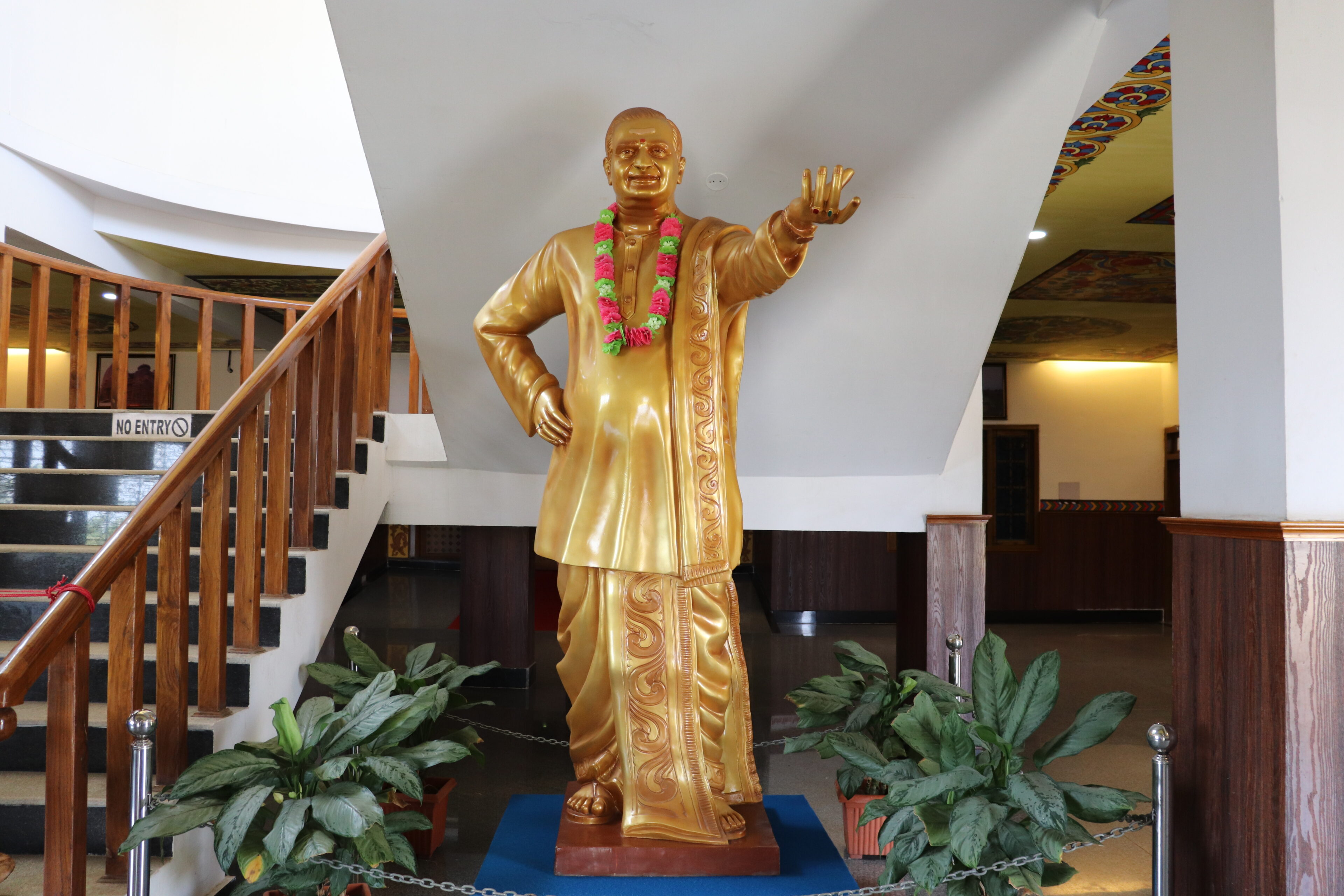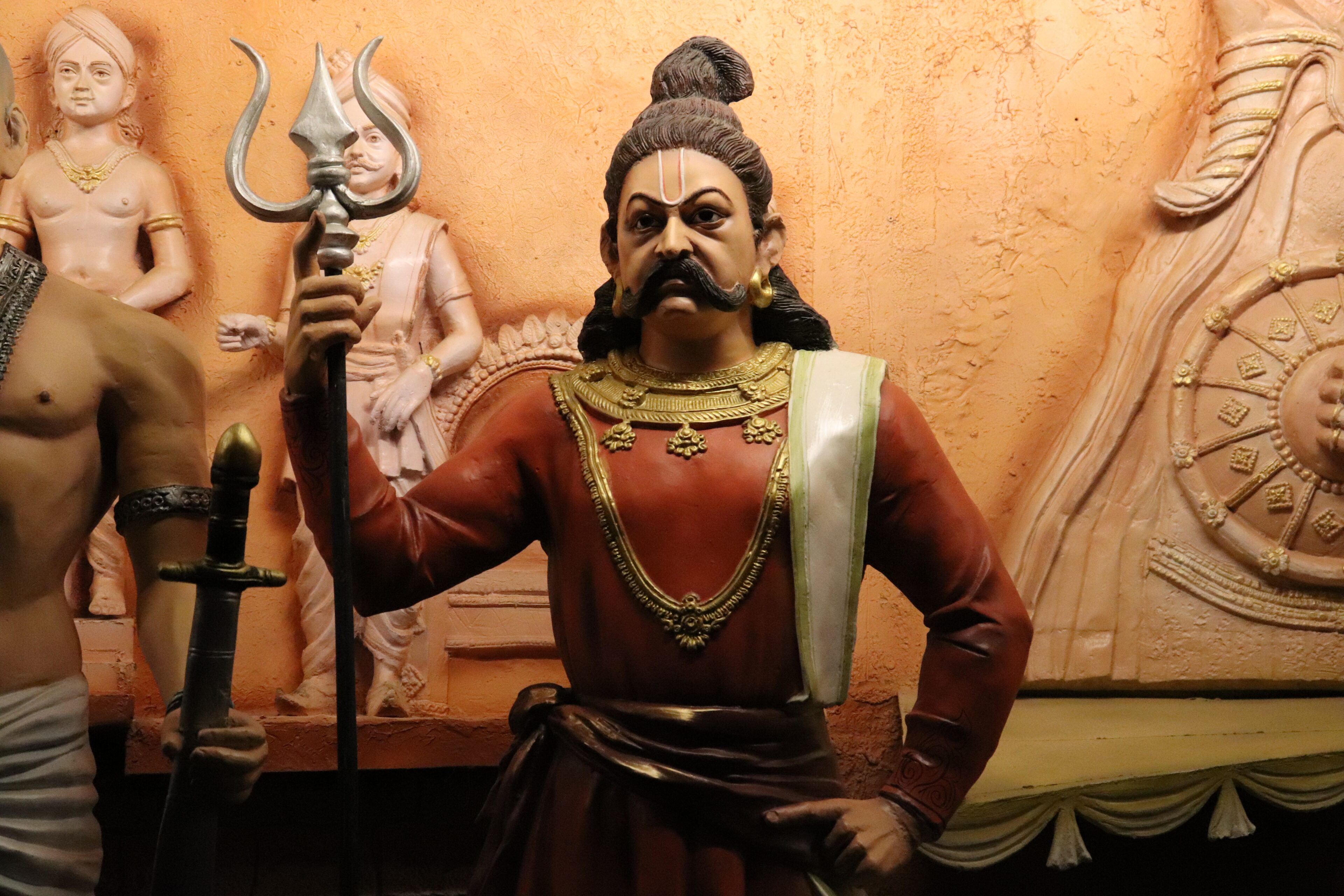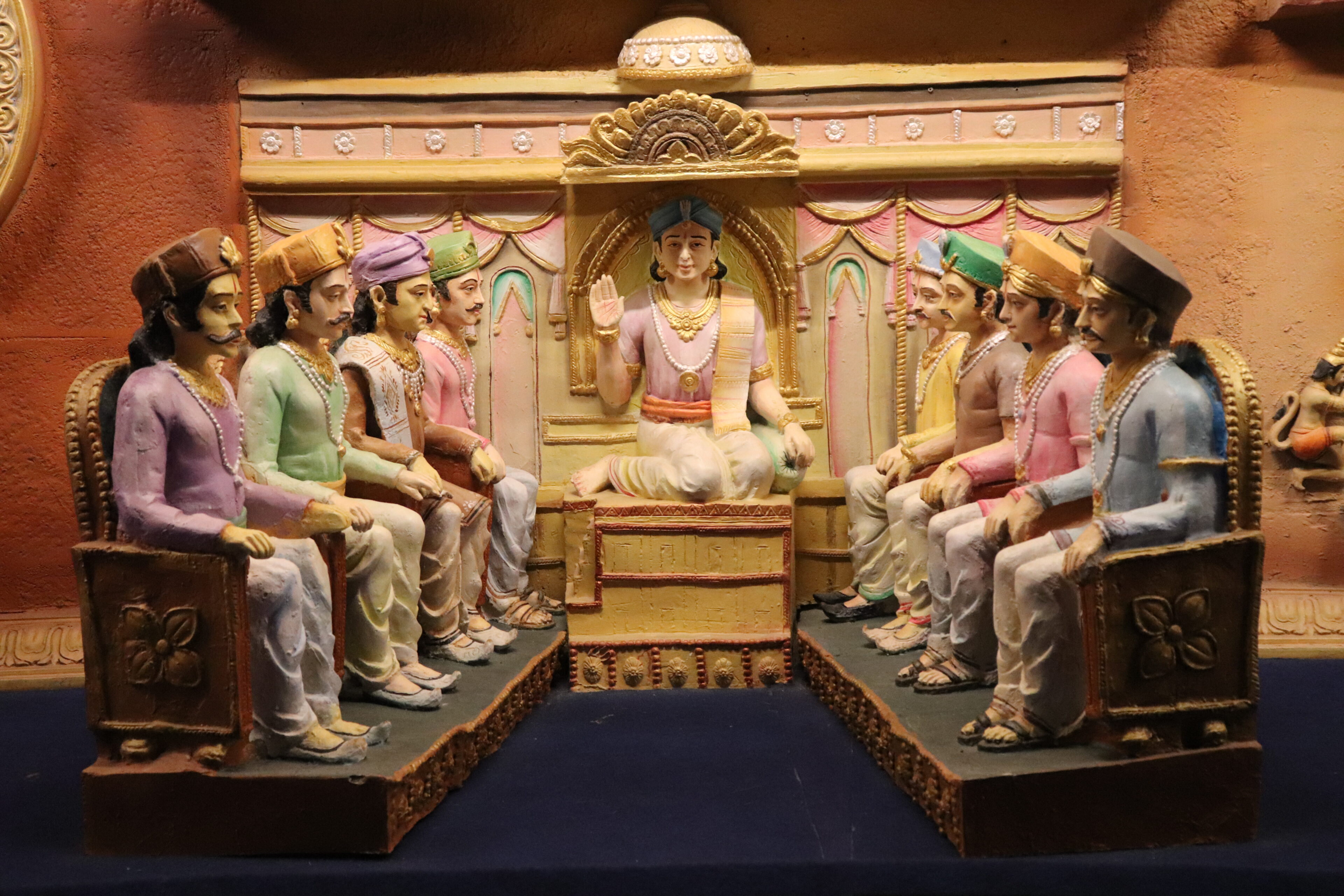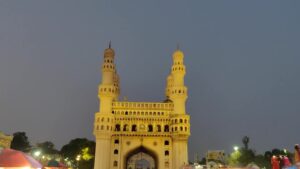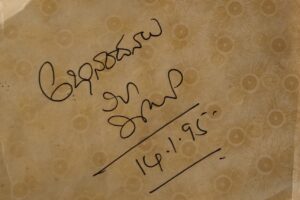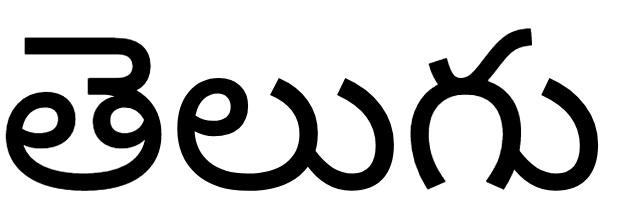
THE TELUGU LANGUAGE (TELUGU / తెలుగు) is a Dravidian language spoken by Telugu people predominantly living in the Indian states of Andhra Pradesh, Telangana and Yanam district of Puducherry – where it is also the official language. Telugu is also a linguistic minority in the states of Odisha, Karnataka, Tamil Nadu, Kerala, Chhattisgarh, Maharashtra and Andaman and Nicobar Islands. Telugu is the most spoken Indian language in India after Hindi, Bengal & Marathi. Telugu stands alongside Hindi and Bengali as one of the few languages with primary official language status in more than one Indian state. Telugu ranks 15th in the Ethnologue list of languages by number of native speakers. Telugu is the most widely spoken member of the Dravidian language family. Telugu is one of the twenty-two scheduled languages of the Republic of India with official status in India with a constitutional representation (Official languages of India). Telugu is one of six languages designated a classical language of India by the country’s government

WHAT IS THE TELUGU LANGUAGE (´´TELUGU´´ / ´´తెలుగు´´ ) ?
- Telugu (తెలుగు) is an Indian origin – Dravidian language spoken by Telugu people predominantly living in the Indian states of Andhra Pradesh, Telangana and Yanam district of Puducherry – where it is also the official language
- Telugu also has official language status in the Yanam district of the Union Territory of Puducherry
- Telugu is also a linguistic minority in the states of Odisha, Karnataka, Tamil Nadu, Kerala, Chhattisgarh, Maharashtra and Andaman and Nicobar Islands
- Telugu is the most spoken Indian language in India after Hindi, Bengal & Marathi
- Telugu stands alongside Hindi and Bengali as one of the few languages with primary official language status in more than one Indian state
- Telugu ranks 15th in the Ethnologue list of languages by number of native speakers
- Telugu is the most widely spoken member of the Dravidian language family
- Telugu is one of the twenty-two scheduled languages of the Republic of India with official status in India with a constitutional representation (Official languages of India)
- Telugu is one of six languages designated a classical language of India by the country’s government
- The Andhra Pradesh Official Language Act, 1966, declares Telugu the official language of the state that is currently divided into Andhra Pradesh and Telangana
TELUGU – ONE OF THE 6 CLASSICAL LANGUAGES OF INDIA
- In 2004, the Government of India declared that languages that met certain requirements could be accorded the status of a “Classical Language” of India
- Over the next few years, several languages were granted the Classical status, and demands have been made for other languages, including Bengali and Marathi
CLASSICAL LANGUAGES OF INDIA
- Tamil (in 2004)
- Sanskrit (in 2005)
- Kannada (in 2008)
- Telugu (in 2008)
- Malayalam (in 2013)
- Odia (in 2014)
CLASSICAL LANGUAGES ON INDIA : CRITERION FOR QUALIFICATION / SELECTION
- In a 2006 press release, Minister of Tourism and Culture Ambika Soni told the Rajya Sabha the following criteria were laid down to determine the eligibility of languages to be considered for classification as a “Classical Language”
- High antiquity of its early texts/recorded history over a period of 1500–2000 years
- A body of ancient literature/texts, which is considered a valuable heritage by generations of speakers
- The literary tradition be original and not borrowed from another speech community
- The classical language and literature being distinct from modern, there may also be a discontinuity between the classical language and its later forms or its offshoots
CLASSICAL LANGUAGES ON INDIA : BENFITS
As per Government of India’s Resolution No. 2-16/2004-US(Akademies) dated 1 November 2004, the benefits that will accrue to a language declared as a “Classical Language” are:
- Two major international awards for scholars of eminence in Classical Indian Languages are awarded annually.
- A Centre of Excellence for Studies in Classical Languages is set up
- The University Grants Commission will be requested to create, to start with at least in the Central Universities, a certain number of Professional Chairs for Classical Languages for scholars of eminence in Classical Indian Languages
IS TELUGU USED (SPOKEN / WRITTEN) OUTSIDE INDIA ?
- Telugu is also the fastest-growing language in the United States, where there is a large Telugu – speaking community
- The American Community Survey has said that data for 2016 which were released in September 2017 say Telugu is the third most widely spoken Indian language in the US
- Hindi tops the list followed by Gujarati – as of the 2010 census
- The Telugu diaspora numbers more than 1000000 in the United States, with the highest concentration in Central New Jersey (Little Andhra)
- As of 2018 -Telugu is the fastest-growing language in the United States, with the number of Telugu speakers in the United States increasing by 86% between 2010 and 2017
- Telugu speakers are also found almost throughout the world
WHAT / HOW IS THE TELUGU SCRIPT IN BRIEF ?
WHAT IS THE MAJOR DIFFERENCE WITH OTHER MAJOR SCRIPTING SYSTEMS IN THE LANGUAGES OF THE WORLD ?
- The Telugu script is an abugida consisting of 60 symbols — 16 vowels, 3 vowel modifiers and 41 consonants
- Telugu script (Telugu: తెలుగు లిపి, romanized: Telugu lipi), an abugida from the Brahmic family of scripts, is used to write the Telugu language
- An abugida or alphasyllabary, is a segmental writing system in which consonant–vowel sequences are written as a unit; each unit is based on a consonant letter, and vowel notation is secondary
- This contrasts with a full alphabet in which vowels have status equal to consonants
- This also contrasts with an abjad – in which vowel marking is absent, partial, or optional (although in less formal contexts, all three types of script may be termed alphabets
- The terms also contrast them with a syllabary, in which the symbols cannot be split into separate consonants and vowels
- Abugidas include the extensive Brahmic family of scripts of Tibet, South and Southeast Asia, Semitic Ethiopic scripts, and Canadian Aboriginal syllabics
- As is the case for syllabaries, the units of the writing system may consist of the representations both of syllables and of consonants.
- For scripts of the Brahmic family, the term akshara is used for the units
- Telugu has a complete set of letters that follow a system to express sounds
- The script is derived from the Brahmi script like those of many other Indian languages
- The Telugu script is written from left to right and consists of sequences of simple and/or complex characters
- The script is syllabic in nature—the basic units of writing are syllables
- Since the number of possible syllables is very large – syllables are composed of more basic units such as vowels (“acchu” or “swaram“) and consonants (“hallu” or “vyanjanam“)
- Consonants in consonant clusters take shapes that are very different from the shapes they take elsewhere
- Consonants are presumed pure consonants, that is, without any vowel sound in them
- However, it is traditional to write and read consonants with an implied “a” vowel sound When consonants combine with other vowel signs, the vowel part is indicated orthographically using signs known as vowel “mātras“
- The shapes of vowel “mātras” are also very different from the shapes of the corresponding vowels
- Historically, a sentence used to end with either a single bar। (“pūrna virāmam“) or a double bar॥ (“dīrgha virāmam“)
- In handwriting – Telugu words were not separated by spaces
- However, in modern times – English punctuation (commas, semicolon, etc.) has virtually replaced the old method of punctuation
- Telugu has full-zero (anusvāra) ( ం ), half-zero (arthanusvāra or candrabindu) (ఁ) and visarga ( ః ) to convey various shades of nasal sounds
- [la] and [La], [ra] and [Ra] are differentiated
- Telugu has ĉ and ĵ, which are not represented in Sanskrit
- Their pronunciation is similar to the “s” sound in the word treasure (i.e., the postalveolar voiced fricative) and “z” sound in zebra, i.e., the alveolar voiced fricative, respectively
- Telugu is assigned Unicode codepoints: 0C00-0C7F (3072–3199)
|
Sister systems
|
Kannada |
|---|---|
|
Direction |
Left-to-right |
| ISO 15924 | Telu, 340 |
|
Unicode alias
|
Telugu |
|
Unicode range
|
U+0C00–U+0C7F |
- Telugu shares extensive similarities with the Kannada script, as it has evolved from Kadamba and Bhattiprolu scripts of the Brahmi family
- In 2008, Telugu language was given the status of Classical Languages of India, this status owes to its rich history and heritage
TELUGU – PARENT SYSTEM MAP
TELUGU LANGUAGEPARENTSYSTEMS |
Proto-Sinaitic alphabet
|
|---|
DOES TELUGU HAS A NUMBER SYSTEM ?
YES
- Telugu has ten digits employed with the Hindu–Arabic numeral system
|
1 |
2 |
3 |
4 |
5 |
6 |
7 |
8 |
9 |
|
|
౦ |
౧ |
౨ |
౩ |
౪ |
౫ |
౬ |
౭ |
౮ |
౯ |
|
sunna |
okaṭi |
renḍu |
mūḍu |
nālugu |
aidu |
āru |
ēḍu |
enimidi |
tommidi |
IS TELUGU FULLY SUPPORTED ON DIGITAL DEVICES ?
YES
- Telugu script was added to the Unicode Standard in October, 1991 with the release of version 1.0
- Telugu is assigned Unicode codepoints: 0C00-0C7F (3072–3199)
- The Unicode block for Telugu is U+0C00–U+0C7F
- Telugu input, display, and support were initially provided on the Microsoft Windows platform
- Subsequently, various browsers, computer applications, operating systems, and user interfaces were localized in Telugu Language for Windows and Linux platforms by vendors and free and open-source software volunteers
- Telugu-capable smart phones were also introduced by vendors in 2013
WHAT IS THE ETYMOLOGY BEHIND ´´TELUGU´´ ?
- Speakers of Telugu refer to it as simply Telugu
- The word Telugu is believed to have been derived from trilinga, as in Trilinga Desa, “the country of the three lingas
- Older forms of the name include Teluṅgu, Tenuṅgu and Teliṅga
- Atharvana Acharya in the 13th century wrote a grammar of Telugu, calling it the Trilinga Śabdānusāsana (or Trilinga Grammar)
- Appa Kavi in the 17th century explicitly wrote that Telugu was derived from Trilinga
- Another view holds that tenugu is derived from the proto-Dravidian word ten (“south”) to mean “the people who lived in the south/southern direction” (relative to Sanskrit and Prakrit-speaking peoples)
- The name Telugut – then is a result of an “n” to “l” alternation established in Telugu’
WHAT IS THE HISTORY & MYTHOLOGY BEHIND THE ETYMOLOGY BEHIND ´´TELUGU´´ ?
- According to a Hindu chronicle – Shiva descended as linga on three mountains which marked the boundaries of the Telugu country – namely Kaleswaram in Telangana, Srisailam in Rayalaseema and Bhimeswaram, also known as Draksharamam, in Coastal Andhra
- It also thought to be believed that the word Telangana derived from Telingana, Telinga, Trilinga
- In Andhra Kaumudi – a Telugu grammar book, it was mentioned that Āndhra Vishnu, having built an immense wall connecting the three mountains with the Mahendra hills, formed in it three gates, in which the three-eyed Ishwara, bearing the trident in his hand and attended by a host of divinities, resided in the form of three lingams
- Āndhra Viṣṇu assisted by divine angels having fought with the great giant Nishambhu for thirteen yugas killed him in battle and took up his residence with the sages on the banks of the river Godavari, since which time the Telugu country has been named Trilingam
|
Kshetram |
Presiding Deity |
District |
Region |
State |
|
Kaleswaram |
Kaleshwara Mukteswara Swamy |
Jayashankar Bhupalpally |
Telangana |
Telangana |
|
Bhimeswaram (Draksharamam) |
Bhimeswara Swamy |
East Godavari |
Coastal Andhra |
Andhra Pradesh |
|
Srisailam |
Mallikarjuna Swamy |
Kurnool |
Rayalaseema |
Andhra Pradesh
|
- A legend gives the town of Lepakshi a significant place in the Ramayanam
- This was where the bird Jatayu fell, wounded after a futile battle against Ravana who was carrying away Sita
- When Sri Rama reached the spot, he saw the bird and said compassionately, “Le, Pakshi” — translated to ‘rise, bird’
- This indicates the presence of Telugu Language in ancient Indian literature
DO TELUGU INSCRIPTIONS EXIST ?
YES – TELUGU IS A VERY ANCIENT LANGUAGE AND INSCRIPTIONS EXIST SINCE VERY LONG TIME SINCE THE HUMAN HISTORY BEGAN
- Roughly 10000 pre-colonial inscriptions exist in the Telugu language as of 1996 (according to Japanese Historian Noboru Karashima who served as the President of the Epigraphical Society of India in 1985) making it one of the most densely inscribed languages
- Telugu inscriptions are found in all the districts of Andhra Pradesh and Telangana
- According to recent estimates by ASI (Archaeological Survey of India) the number of inscriptions in the Telugu language goes up to 14000
- Prakrit Inscriptions with some Telugu words dating back to between 400 BCE and 100 BCE have been discovered in Bhattiprolu in the Guntur district of Andhra Pradesh
WHAT ARE THE 4 PHASES OF TELUGU LITERATURE ?
TELUGU LITERATURE – FIRST PHASE
- One of the first words in the Telugu language, “Nagabu”, was found in a Sanskrit inscription of the 1st century B.C at Amaravathi (not to be confused with the newly planned city of Amaravati)
- Telugu words were also found in the Dharmasila inscription of Emperor Ashoka
- A number of Telugu words were found in the Sanskrit and Prakrit inscriptions of the Satavahanas, Vishnukundinas, and Ikshwakas
- According to Telugu lore, its grammar has a prehistoric past
- Sage kanva was said to be the language’s first grammarian
TELUGU LITERATURE – SECOND PHASE
POST -IKSHVAKU PERIOD
- The period from 575 CE to 1022 CE corresponds to the second phase of Telugu history, after the Andhra Ikshvaku period
- This is evidenced by the first inscription that is entirely in Telugu, dated 575 CE, which was found in the Rayalaseema region and is attributed to the Renati Cholas, who broke with the prevailing custom of using Sanskrit and began writing royal proclamations in the local language
- During the next fifty years, Telugu inscriptions appeared in Anantapuram and other neighbouring regions
- The Madras Museum plates of Balliya-Choda dated to the mid ninth century AD are the earliest copper plate grants in the Telugu language
- Telugu was more influenced by Sanskrit and Prakrit during this period, which corresponded to the advent of Telugu literature
- Telugu literature was initially found in inscriptions and poetry in the courts of the rulers, and later in written works such as Nannayya’s Mahabharatam (1022 AD)
- During the time of Nannayya, the literary language diverged from the popular language
- It was also a period of phonetic changes in the spoken language
TELUGU LITERATURE – THIRD PHASE
- The third phase is marked by further stylization and sophistication of the literary languages
- During this period the split of the Telugu from Kannada alphabets took place
- Tikkana wrote his works in this script
TELUGU LITERATURE – GOLDEN PHASE
THE VIJAYANAGARA EMPIRE
- The Vijayanagara Empire gained dominance from 1336 to the late 17th century, reaching its peak during the rule of Krishnadevaraya in the 16th century, when Telugu literature experienced what is considered its Golden Age
- A distinct dialect developed in present-day Telangana region, due to Persian/Arabic influence
KRISHNA DEVARAYA´s AMUKTAMALYADA
- Amuktamalyada (Telugu: ఆముక్తమాల్యద) is an epic poem in Telugu composed by Krishnadevaraya of the Vijayanagar Dynasty
- Amuktamalyada translates to A garland of pearls
- Considered as a masterpiece, Amuktamalyada describes the story of wedding of the Hindu Lord Vishnu and Andal (or Goda Devithe) the Tamil Alvar poet and daughter of Periyalvar, at Srirangam
- It is believed that Krishnadevaraya wrote the work, after getting a dream in which Lord Vishnu appeared and instructed him to write the story of his wedding to Andal at Srirangam in Telugu
- In his dream, on being asked why Telugu was chosen, Lord Vishnu is said to have replied
తెలుఁగ దేల యెన్న దేశంబు దెలుఁగేను
తెలుఁగు వల్లభుండఁ తెలుఁగొకండ
యెల్ల నృపులు గొలువ నెరుఁగవే బాసాడి
దేశభాషలందుఁ తెలుఁగు లెస్స
Teluga dēla yenna dēśambu delugēnu
telugu vallabhuṇḍa telugokaṇḍa
yella nr̥pulu goluva nerugavē bāsāḍi
dēśabhāṣalandu telugu les’sa
WHAT IS THE PHONOLOGY BEHIND ´´TELUGU´´ ?
- PHONOLOGY is the system of contrastive relationships among the speech sounds that constitute the fundamental components of a language
- PHONOLOGY is the branch of linguistics that deals with systems of sounds (including or excluding phonetics), within a language or between different languages
- The Roman transliteration of the Telugu script is in the National Library at Kolkata romanisation
- Telugu words generally end in vowels. In Old Telugu, this was absolute
- In the modern language m, n, y, w may end a word
- Atypically for a Dravidian language – voiced consonants were distinctive even in the oldest recorded form of the language
- Sanskrit loans have introduced aspirated and murmured consonants as well
- Telugu does not have contrastive stress, and speakers vary on where they perceive stress
- Most place it on the penultimate or final syllable, depending on word and vowel length
DESCRIBE THE BRIEF BASIS & BACKGROUND BEHIND THE TELUGU GRAMMAR
- The traditional study of Telugu Grammar is known as vyākaranam (వ్యాకరణం)
- The first treatise on Telugu grammar is the Āndhra Śabda Cinṭāmaṇi – was written in Sanskrit by Nannayya, considered the first Telugu poet and translator, in the 12th century CE
- This grammar followed patterns described in grammatical treatises such as Aṣṭādhyāyī and Vālmīkivyākaranam, but unlike Pāṇini, Nannayya divided his work into five chapters, covering samjnā, sandhi, ajanta, halanta and kriya
- Every Telugu grammatical rule is derived from Pāṇinian concepts
- Word order – The basic word order in Telugu is subject-object-verb (SOV)
- Morphosyntax – Relations between participants in an event are coded in Telugu words through suffixation; there are no prefixes or infixes in the language
- There are six word classes in Telugu – Nominals (proper nouns, pronouns), Verbs (actions or events), Modifiers (adjectives, quantifiers, numerals), Adverbs (modify the way in which actions or events unfold) and Clitics
- Telugu nouns are inflected for number (singular, plural), noun class (three classes traditionally termed masculine, feminine, and neuter) and case (nominative, accusative, genitive, dative, vocative, instrumental, and locative)
DESCRIBE THE TELUGU LEXICON
- The lexicon of Telugu shows a pervasive influence of Sanskrit that goes back at least 1000 years
- There is also evidence suggesting an earlier influence
- It’s estimated that 80% of Telugu’s lexicon is derived from Sanskrit
- Indologist David Shulman states that “Telugu must have swallowed Sanskrit whole, as it were, even before Nannaya.”
- He further notes that “every Sanskrit word is potentially a Telugu word” and that Telugu speech and literary texts are Sanskritized to an “enormous degree”
WHAT ARE THE MAJOR DIALECTS IN TELUGU ?
- There are three major dialects, namely, the Coastal dialect spoken in the Coastal Andhra region of Andhra Pradesh, the Rayalaseema dialect spoken in the four Rayalaseema districts of Andhra Pradesh and the Telangana dialect spoken mainly in the state of Telangana
- Other dialects of Telugu are Berad, Dasari, Dommara, Golari, Kamathi, Komtao, Konda-Reddi, Salewari, Vadaga, Srikakula, Vishakhapatnam, East Godaveri, Rayalseema, Nellore, Guntur, Vadari and Yanadi
- In Sri Lanka, an ethnic gypsy minority known as the Ahikuntakas (otherwise called Kuravars) in the Batticaloa district speak a localised dialect in the form of Sri Lanka Gypsy Telugu
HOW DOES GENERAL / COMMON PLACE NAMES LOOK LIKE IN TELUGU ?
- Telugu place names are present all around Andhra Pradesh and Telangana
- Some of the common suffixes are -ooru, -pudi, -pedu, -peta, -patnam, -wada, -giri, -cherla, -seema, -gudem, -palle, -palem and -palli
WHO ARE SOME OF THE KEY TELUGU POETS & AUTHORS ?
WHO ARE THE´´KAVI TRAYAM´´ ? WHY ARE THEY CALLED SO ?
- Nannaya Bhattarakudu’s (Telugu : నన్నయ) Andhra mahabharatam, who lived around the 11th century, is commonly referred to as the first Telugu literary composition (aadi kaavyam)
- Although there is evidence of Telugu literature before Nannaya, he is given the epithet Aadi Kavi (“the first poet”)
- Nannaya was the first to establish a formal grammar of written Telugu
- During the period 1000–1100 CE, Nannaya’s re-writing of the Mahābhārata in Telugu (మహాభారతము) established the liberal borrowing of Sanskrit words
- Tikkana Somayaji (1205–1288 CE) : Nannaya’s Andhra Mahabharatam was almost completed by Tikanna Somayaji (Telugu : తిక్కన సోమయాజి) (1205–1288) who wrote chapters 4 to 18
- Yerrapragada : (Telugu: ఎర్రాప్రగడ) who lived in the 14th century, finished the epic by completing the third chapter
- He mimics Nannaya’s style in the beginning, slowly changes tempo and finishes the chapter in the writing style of Tikkana
- These three writers – Nannaya, Tikanna and Yerrapragada – are known as the Kavitraya (“three great poets”) of Telugu
- Other such translations like Marana’s Markandeya Puranam, Ketana’s Dasakumara Charita, Yerrapragada’s Harivamsam followed
- Many scientific works like Ganitasarasangrahamu by Pavuluri Mallana and Prakirnaganitamu by Eluganti Peddana, were written in the 12th century
- Baddena Bhupala (1220–1280 CE) – Sumati Shatakam, which is a neeti (“moral”), is one of the most famous Telugu Shatakams
- Shatakam is composed of more than a 100 padyalu (poems)
- The Sumatee Shatakam is also one of the earliest Telugu works to be translated into a European language, as C. P. Brown rendered it in English in the 1840s
- Palkuriki Somanatha: Important among his Telugu language writings are the Basava Purana, Panditaradhya charitra, Malamadevipuranamu and Somanatha Stava–in dwipada metre (“couplets”)
- Anubhavasara, Chennamallu Sisamalu, Vrishadhipa Shataka and Cheturvedasara–in verses; Basavodharana in verses and ragale metre (rhymed couplets in blank verse); and the Basavaragada
- Gona Budda Reddy : His Ranganatha Ramayanam was a pioneering work in the Telugu language on the theme of the Ramayana epic
- Most scholars believe he wrote it between 1300 and 1310 A.D., possibly with help from his family
- The work has become part of cultural life in Andhra Pradesh and is used in puppet shows
- Paravastu Chinnayya Soori (1807–1861) is a well-known Telugu writer who dedicated his entire life to the progress and promotion of Telugu language and literature
- Sri Chinnayasoori wrote the Bala Vyakaranam in a new style after doing extensive research on Telugu grammar
- Other well-known writings by Chinnayasoori are Neethichandrika, Sootandhra Vyaakaranamu, Andhra Dhatumoola, and Neeti Sangrahamu
- Kandukuri Veeresalingam (1848–1919) is generally considered the father of modern Telugu literature
- His novel Rajasekhara Charitamu was inspired by the Vicar of Wakefield
- His work marked the beginning of a dynamic of socially conscious Telugu literature and its transition to the modern period, which is also part of the wider literary renaissance that took place in Indian culture during this period
- Other prominent literary figures from this period are Gurajada Appa Rao, Viswanatha Satyanarayana, Gurram Jashuva, Rayaprolu Subba Rao, Devulapalli Krishnasastri and Srirangam Srinivasa Rao, popularly known as Mahakavi Sri Sri
- Sri Sri was instrumental in popularising free verse in spoken Telugu (vaaduka bhasha), as opposed to the pure form of written Telugu used by several poets in his time
- Devulapalli Krishnasastri is often referred to as the Shelley of Telugu literature because of his pioneering works in Telugu Romantic poetry
- Viswanatha Satyanarayana won India’s national literary honour, the Jnanpith Award for his magnum opus Ramayana Kalpavrukshamu
- Narayana Reddy won the Jnanpith Award in 1988 for his poetic work, Viswambara
- Ravuri Bharadhwaja won the 3rd Jnanpith Award for Telugu literature in 2013 for Paakudu Raallu, a graphic account of life behind the screen in film industry
- Kanyasulkam, the first social play in Telugu by Gurajada Appa Rao, was followed by the progressive movement, the free verse movement and the Digambara style of Telugu verse
- Other modern Telugu novelists include Unnava Lakshminarayana (Maalapalli), Bulusu Venkateswarulu (Bharatiya Tatva Sastram), Kodavatiganti Kutumba Rao and Buchi Babu
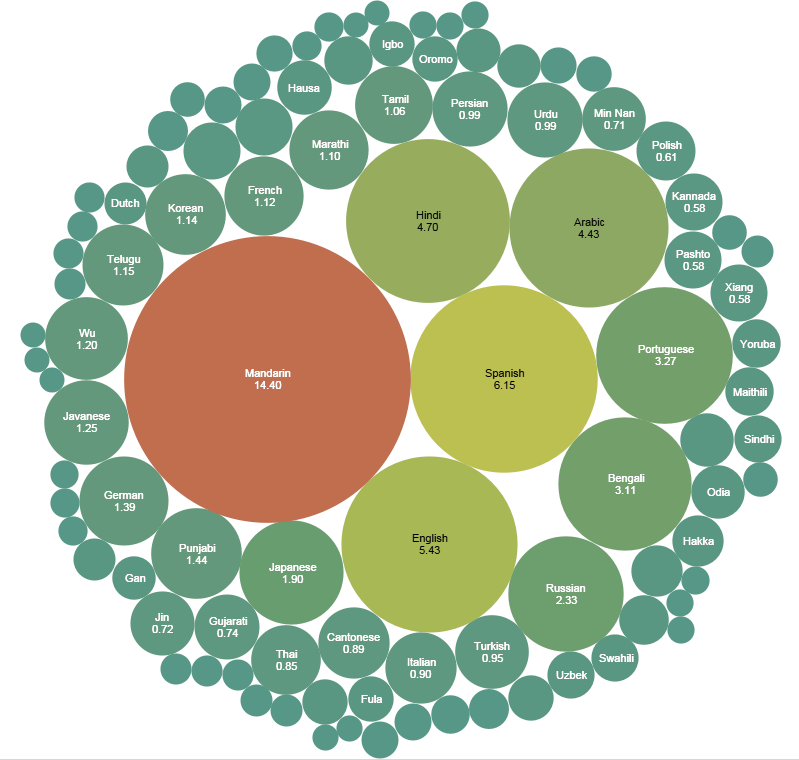
POTTI SREERAMULU TELUGU UNIVERSITY
POTTI SREERAMULU TELUGU UNIVERSITY
CAMPUSES – THERE ARE FIVE CAMPUSES OF TELUGU UNIVERSITY IN TELANGANA & ANDHRA PRADESH
- Lalita Kalaatoranam, Hyderabad
- Nannaya Pranganam, Rajahmundry
- Palkuriki Somanatha Pranganam, Srisailam
- Potana Pranganam, Warangal
- Sri Siddhendra Yogi Pranganam, Kuchipudi
POTTI SREERAMULU TELUGU UNIVERSITY
- The Potti Sreeramulu Telugu University (PSTU) is one of the few Indian language universities in India
- It was established as “Telugu University” on 2 December 1985 through an Act of Legislation (Act No. 27 of 1985) by the State Legislature of the-then united Andhra Pradesh with headquarters at Hyderabad and campuses at Srisailam and Rajahmundry
- The School of Folk and Tribal Lore was established at Warangal during the year 1994
- This University was founded with the broad objectives of serving the cause of the Telugu people, both within the State and outside
- For this purpose, the state government has merged the Sahitya, Sangeeta, Nataka, Nritya and Lalita Kala Academies, International Telugu Institute and Telugu Bhasha Samiti into the University
- Thus, the University was established to function as a central organization for teaching and research in Language and Literature, History and Culture, Fine Arts and Performing Arts, religion and philosophy of the Telugu speaking people
- It strives to inculcate a sense of identity in them as citizens of India and as responsible representatives of Andhra Pradesh and Telangana
- This University was renamed as “Potti Sreeramulu Telugu University” in the year 1998
- The University Grants Commission has recognized the University as fit to receive financial grants since 2 May 1990
POTTI SREERAMULU TELUGU UNIVERSITY : LIBRARY
- Telugu University Library is established in the year 1985 in Osmania University campus
- It has three Campus libraries at Srisailam, Rajahmundry and Warangal. Library contains various titles on the subjects like Telugu language, literature, Linguistics, Fine arts, Astrology, Journalism, Culture, Folk Arts
- Potti Sreeramulu Telugu University is a unique University. It caters mainly to the needs of the Telugu language speaking people
- Its aim is to preserve and propagate all aspects of Telugu culture, Telangana culture including literature and languages
- As such, it has a few unique programmes.
- Documentation of the lives of Eminent People: The University has an audio-visual studio, which caters exclusively to preparing documentaries of eminent people from all fields of Telugu culture
POTTI SREERAMULU TELUGU UNIVERSITY
MUSEUM
- Telugu University Museum has three galleries
- The History gallery has 52 oil paintings
- The Contemporary Art gallery has 124 canvas paintings by eminent artists
- The Portrait gallery displays 220 portraits of Telugu luminaries in various fields and 211 Nataratnas, distinguished stage artists acquired from Dr. Mikkilineni Radhakrishna Murthy
POTTI SREERAMULU TELUGU UNIVERSITY
OFFICIAL MAGAZINE – TELUGU VANI
- Telugu University is Publishing “Telugu Vaani “, a Tri-Monthly Magazine
- The Magazine covers news regarding Festivals of Fine Arts, Cultural Programmes, Seminars and other activities of University and its Campuses
- It publishes the news of various programmes conducted by Telugu Associations within and outside Andhra Pradesh / Telangana
TELUGU HERITAGE MUSEUM – TELUGU SAMSKRUTHIKA NIKETANAM
(KAILASAGIRI / VISAKHAPATNAM)
(తెలుగు సాంస్కృతిక నికేతనం : కైలాసగిరి / విశాఖపట్నం)
(KAILASAGIRI / VISAKHAPATNAM)
(తెలుగు సాంస్కృతిక నికేతనం : కైలాసగిరి / విశాఖపట్నం)

(KAILASAGIRI / VISAKHAPATNAM)
(తెలుగు సాంస్కృతిక నికేతనం : కైలాసగిరి / విశాఖపట్నం)
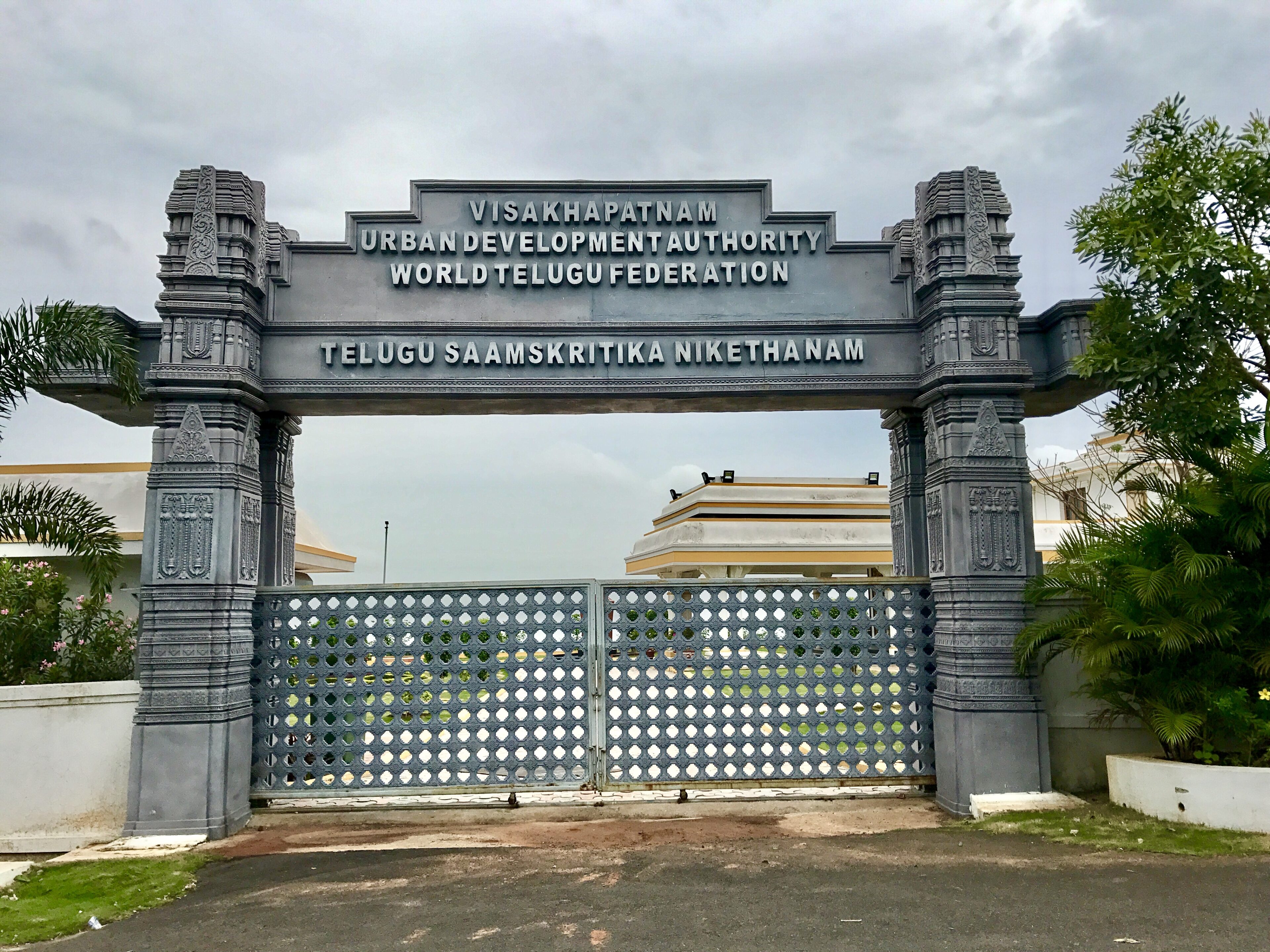
(KAILASAGIRI / VISAKHAPATNAM)
(తెలుగు సాంస్కృతిక నికేతనం : కైలాసగిరి / విశాఖపట్నం)
TELUGU HERITAGE MUSEUM
TELUGU SAMSKRUTHIKA NIKETANAM
VISAKHAPATNAM
ESTABLISHED – 19 NOVEMBER 2015
- Telugu Saamskruthika Niketanam, also called World Telugu Museum, is located in Visakhapatnam, Andhra Pradesh, India
- Objectives – The museum’s main objective is to show Telugu history and culture from the Satavahana dynasty until modern times
- It has 42 episodes on the arts, folk arts, great poets, language, literature and history of great personalities in Telugu society
WORLD TELUGU CONFERENCE
- The World Telugu Conference (WTC) is a conference for furtherance of the Telugu language
- Literary luminaries attend and share their views on spreading and preserving the language and advocating a Telugu language policy
- The first WTC was held in Hyderabad in 1975
- The second WTC was in April 1981 in Kuala Lumpur, Malaysia
- The third in December 1990 in Mauritius
- The fourth Telugu conference was held in Tirupati in December 2012
- The fifth was held from 15 December 2017 at LB Stadium, Hyderabad, celebrating 40 years of World Telugu Conferences
|
Official title |
Host city |
Host country |
Year |
|
1st World Telugu Conference |
Hyderabad |
India |
1975 |
|
2nd World Telugu Conference |
Kuala Lumpur |
Malaysia |
1981 |
|
3rd World Telugu Conference |
Port Louis |
Mauritius |
1990 |
|
4th World Telugu Conference |
Tirupati |
India |
2012 |
|
5th World Telugu Conference |
Hyderabad |
India |
2017 |
UGADI – THE TELUGU NEW YEAR
- Ugadi (Ugādi, Samvatsarādi, Yugadi) is the New Year’s Day for the States of Andhra Pradesh, Telangana and Karnataka in India
- It is festively observed in these regions on the first day of the Hindu lunisolar calendar month of Chaitra
- This typically falls in March or April of the Gregorian calendar
- The day is observed by drawing colorful patterns on the floor called kolamulus ( Kannada: Rangoli , Telugu: Muggulu, ) mango leaf decorations on doors called torana (kannada : torana,Telugu: Toranalu ), buying and giving gifts such as new clothes, giving charity to the poor, special bath followed by oil treatment, preparing and sharing a special food called pachadi, and visiting Hindu temples
- The pachadi is a notable festive food that combines all flavors – sweet, sour, salty, bitter, astringent and piquant (spicy hot)
- In Telugu and Kannada Hindu traditions, it is a symbolic reminder that one must expect all flavors of experiences in the coming new year and make the most of them
- Ugadi has been an important and historic festival of the Hindus, with medieval texts and inscriptions recording major charitable donations to Hindu temples and community centers on this day
- The same day is observed as a New Year by Hindus in many other parts of India. For example, it is called Gudi Padwa in Maharashtra, but sometimes observed a Gregorian day earlier because the lunar day starts and ends in Hindu calendar according to the position of the moon
- In Karnataka, the festival is celebrated as Yugadi
UGADI : TERMINOLOGY
- The name Yugadi or Ugadi is derived from the Sanskrit words yuga (age) and ādi (beginning): “the beginning of a new age”
- Yugadi or Ugadi falls on “Chaitra Shudhdha Paadyami” or the first day of the bright half of the Indian month of Chaitra
- This generally falls in late March or early April of the Gregorian calendar
- The people of Karnataka use the term Yugadi (ಯುಗಾದಿ) and the people of Andhra Pradesh and Telangana use the term Ugadi (ఉగాది) for this festival
UGADI : PRACTICES
- The Kannada, Kodava, Telugu and the Tulu diaspora in Karnataka, Telangana, Andhra Pradesh, Tamil Nadu and Kerala celebrate the festival with great fanfare; gatherings of the extended family and a sumptuous feast are ‘de rigueur’
- The day begins early with ritual showers, rubbing the body with perfumed oil, followed by prayers
- Ugadi Pacchadi (right) is a symbolic dish prepared by Hindu women on this festival
- Preparations for the festival begin a week ahead
- Houses are given a thorough clean
- People buy new clothes and Dhoti and buy new items for the festival, decorate the entrance of their houses with fresh mango leaves
- Mango leaves and coconuts are considered auspicious in the Hindu tradition, and they are used on Ugadi
- People also clean the front of their house with water and cow dung paste, then draw colorful floral designs
- People offer prayer in temples
- The celebration of Ugadi is marked by religious zeal and social merriment
- Special dishes are prepared for the occasion.In Karnataka etables olige, vobattu and mango pickles are made
- Andhra Pradesh and Telangana, eatables such as “pulihora, bobbatlu (Bhakshalu/ polelu/ oligale), New Year Burelu and Pachadi” and preparations made with raw mango go well with the occasion
- Of this pachadi (or Ugadi pacchadi) is most notable, and consists of a chutney-like dish which includes ingredients to give all flavors: sweet, sour, tangy and bitter
- This festive Hindu food is made from tamarind paste, neem flowers, brown sugar or sweet jaggery, salt, and sometimes mango
- It is a symbolic reminder of complex phases of life one should reasonably expect in the new year
- Greetings
- In Kannada, the greeting is Yugadi Habbada Shubhaashayagalu – ಯುಗಾದಿ ಹಬ್ಬದ ಶುಭಾಶಯಗಳು (“Greetings for the festival of Yugadi”) or Hosa varshada shubhashayagalu – ಹೊಸ ವರ್ಷದ ಶುಭಾಶಯಗಳು (“Greetings on the New Year”)
- In Telugu, the traditional greetings for Ugadi are kroththa yeta, ugadi panduga, palukarimpulu or ugadi subhaakankshalu – “క్రొత్త ఏట” / “ఉగాది పండుగ” పలుకరింపులు, లేదా ఉగాది శుభాకాంక్షలు (“Greetings for the festival of Ugadi”) and Nutana samvastara shubhaakankshalu -నూతన సంవత్సర శుభాకాంక్షలు (“Greetings on the New Year”)
TELUGU LANGUAGE DAY
OBSERVANCE ON AUGUST 29 – EVERY YEAR
SIGNIFICANCE : BIRTHDAY OF TELUGU POET GIDUGU VENKATA RAMAMURTHY
- Telugu Language Day (Telugu : తెలుగు భాషా దినోత్సవం ; IAST: Telugu bhāṣā dinōtsavaṁ; “Day of the Telugu Language”) is observed on 29 August each year
- This date was chosen to coincide with the birthday of the Telugu poet Gidugu Venkata Ramamurthy
- Gidugu Venkata Ramamurthy (1863-1940) was a Telugu writer and one of the earliest modern Telugu linguists and social visionaries during the British rule
- He championed the cause of using a language comprehensible to the common man (‘Vyavaharika Bhasha’) as opposed to the scholastic language (‘Grandhika Bhasha’)
Works
- ‘Kalinga (Orissa) Charitra’
- Developed language script and prepared lexicons for the ‘Savara’ people (Munda tribe)
- Sora-English Dictionary
- Savara Patalu
Honors
- The British Government conferred on him the title of Rao Saheb not for loyalty to the Crown but for his service to the Savaras, to pedagogy and to Telugu.
- The British Government conferred on him the title of “Kaisar-i-Hind Medal” on him in the year of 1933 for his services
- The Telugu Language Day is celebrated on his birthday 29 August
- Nicknamed as pidugu (a thunderbolt) rhyming with his surname, Gidugu
- European linguisticians like Jules Bloch and Daniel Jones recognized his work on Munda linguistics as pioneering and original
TELUGU – SOME MORE FACTS
- Voted as the 2nd best script – In 2012, the language’s script was voted as the 2nd best script in the world by International Alphabet Association while the Korean language was voted as the best script
- Italian of the east – Telugu is the only language in the Eastern world that has every single word ending with a vowel sound’ – For this very reason, the language is hailed as the ‘Italian of the East’
- The most number of Saamethulu – “Adedo Saametha Cheppinattu….”, Telugu has the most number of Saamethulu (idioms) as compared to any other language.
- Dating back to 400 BC – Records suggest that Prakrit Inscriptions with some words dating back to 400 BC to 100 BC have been discovered in Bhattiprolu in the Guntur district of Andhra Pradesh
- A street named in Telugu in Myanmar – There’s a street called as Malle Poola Dibba (street of jasmines) in Moumein, Myanmar
- Rabindranath Tagore’s compliment – One of India’s greatest poets, Rabindranath Tagore hailed Telugu as the sweetest Indian language
